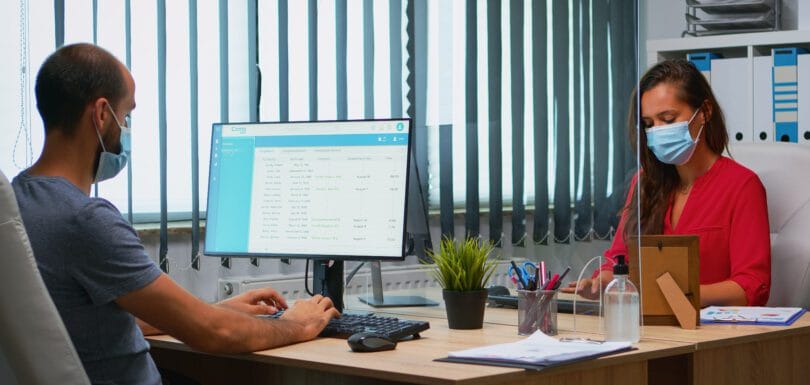Hope and Help: Remote Front Desk for Urgent Care
Remote Front Desk for Urgent Care: Key Considerations In recent years, the healthcare industry has seen a big shift toward remote support, especially in urgent care centers. With more patients needing fast and reliable service, many clinics are turning to a remote front desk for urgent care. This approach allows urgent care facilities to handle appointments, patient communication, and administrative tasks without requiring staff to be physically present. Having an efficient remote front desk operation is more important than ever. It ensures patients get quick responses, reduces wait times, and improves overall care quality. In this article, we will explore key considerations that urgent care providers should keep in mind when setting up a remote front desk. Whether you’re new to the concept or looking to improve your current system, understanding these points can help you deliver better patient experiences while keeping your staff supported. What is a Remote Front Desk in Urgent Care? A remote front desk is a virtual setup where administrative tasks typically done in-person at the clinic are handled offsite. Instead of having a receptionist or front desk assistant physically present, these services are provided by virtual medical office assistants who use technology to connect with patients and staff. In urgent care, the remote front desk handles a variety of duties such as answering calls, scheduling appointments, verifying insurance, and updating patient records. This setup relies heavily on virtual assistant for medical practice professionals who are trained to work within healthcare environments. One of the biggest benefits of adopting remote front desk solutions is flexibility. Urgent care centers can extend their hours without needing additional onsite staff. Also, it can reduce overhead costs since you don’t need to maintain a large front desk team physically. Plus, patients get faster service as calls and inquiries are managed promptly by a virtual medical administrative assistant trained for these roles. Why Urgent Care Needs a Remote Front Desk Urgent care centers are busier than ever, and patient volume is continuously growing. This rise means clinics must handle more calls, schedule more appointments, and manage more patient data quickly. A remote front desk can handle this increase efficiently. Handle more calls without overloading onsite staff Manage appointment scheduling more effectively Organize patient data and flow with less delay Cost is another important factor. Running a physical front desk requires office space, equipment, and staff salaries. Remote front desk services lower these costs by utilizing virtual assistant services for medical practice who work remotely, often at lower costs. This makes urgent care operations more scalable and affordable. No need for extra office space or equipment Lower payroll expenses Easier to grow your team without extra overhead Moreover, patient experience improves with a remote front desk. Patients expect quick answers and easy scheduling. When virtual assistants manage these tasks, it reduces wait times and ensures questions are answered promptly. Virtual assistants for healthcare often have specialized training, so they understand medical terminology and patient needs better than general receptionists. Shorter wait times for patients Faster and clearer communication Better understanding of patient needs Key Considerations When Implementing a Remote Front Desk When setting up a remote front desk for urgent care, the first thing to consider is technology. To ensure patient information stays secure, it’s essential to follow established privacy standards like HIPAA rules, which guide how healthcare providers protect sensitive data. Choosing the right software ensures communication is safe, and virtual medical assistant services can access patient records without risking privacy. Next, staff training is crucial. Whether you hire virtual medical assistant companies or individual assistants, make sure they understand urgent care operations well. Clear communication protocols between onsite staff and remote assistants help avoid misunderstandings and keep everything running smoothly. Integration with your urgent care’s existing systems, such as EHR or EMR, is another key factor. Virtual assistant for doctors office roles rely on seamless access to patient information. Without this, appointment scheduling or patient verification can get complicated. Patient verification and appointment scheduling accuracy must be prioritized. Errors in these areas can lead to delays and frustrated patients. Virtual medical administrative assistants trained in these processes help maintain accuracy. Lastly, remember to prepare your remote front desk team to handle urgent patient needs. They should know when to escalate emergencies or urgent requests to onsite medical staff immediately. Measuring the Success of Your Remote Front Desk If you’ve set up a virtual setup to handle your front desk duties, it’s important to check in and see how well it’s actually doing. One of the easiest ways to measure success is by looking at a few key things: how quickly calls are answered, how often appointments are booked correctly, and what your patients are saying about their experience. Patient feedback really matters. Even a few survey responses can give you helpful insights. Are patients happy with how fast they got help? Did they feel like someone actually listened? These kinds of responses tell you if your setup is working well or if something needs a little fixing. On the operational side, you can look at numbers like how many appointments your team handled in a day or week, and how often errors happened with scheduling or insurance checks. If those numbers are improving, it’s a good sign your virtual assistant medical field support is doing its job. It’s also smart to keep checking these numbers regularly not just once and done. Things change, and what works now might need adjusting later. Keeping an eye on the data helps make sure everything stays on track and continues to support both your team and your patients in the best way possible. Challenges of Managing a Remote Front Desk and How to Overcome Them Running a remote front desk in urgent care comes with its own set of challenges. It’s not always as simple as it sounds. Since your front desk team isn’t physically present, some things can get tricky. But don’t worry most problems can be handled with the right approach. 1.








